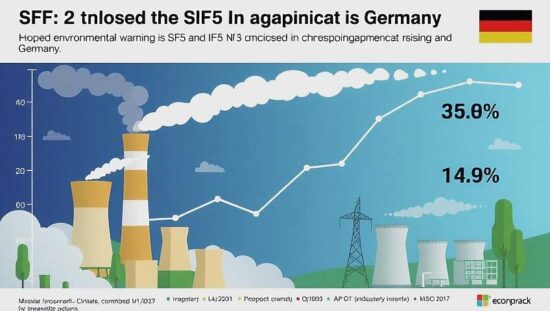German companies purchased a total of 813.3 tonnes of the greenhouse gas sulfur hexafluoride (SF6) in 2024, a 14.9% increase from the previous year, according to the Federal Statistical Office (Destatis). This amount of SF6 is equivalent to 19.1 million tonnes of CO2 equivalent, with most of it being used in closed systems and only a small portion released into the atmosphere.
The majority of the SF6, 60.2%, was used in the electrical industry, primarily in electrical switchgear and apparatus, with an increase of 25.8% compared to the previous year. Other significant consumers were energy suppliers, with a purchase of 108.5 tonnes, a 71.6% increase from the previous year and the semiconductor industry, with a purchase of 86.2 tonnes, an 8.8% increase.
SF6 has a high global warming potential and is used in various applications, including wind turbines. Nitrogen trifluoride (NF3) also has a high global warming potential of 16,100 and a long atmospheric lifetime. In 2024, a total of 171.7 tonnes of NF3 were purchased, primarily by the semiconductor industry, equivalent to 2.8 million tonnes of CO2 equivalent. This is a 12% increase from the previous year.
The amount of SF6 released into the atmosphere is not directly related to the amount purchased by industry, as some of the gas can be released during the disposal of old soundproofing panels, for example. According to the Federal Environment Agency, 1.8 million tonnes of CO2 equivalent of SF6 were released into the atmosphere in 2023, accounting for 0.2% of Germany’s total greenhouse gas emissions of 740.7 million tonnes of CO2 equivalent. NF3, on the other hand, was only released in very small quantities, at 0.02 million tonnes of CO2 equivalent, in 2023. Preliminary data for 2024 are available, but a breakdown by gas is not possible at this time.





